The Battle of Glasgow: Scotland's 'hidden' history of suffragettes and self-defence from 'Suffrajitsu' to Indian clubs
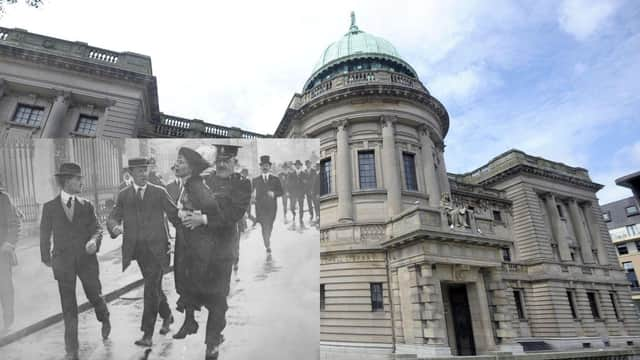

Emmeline Pankhurst, leader of the Women's Social and Political Union (WSPU), spoke at a meeting in Glasgow on March 9, 1914 at the former St Andrew’s Hall where the Mitchell library now stands.
What unfolded that day in Scotland’s largest city, a confrontation between suffragettes and police, has become known as The Battle of Glasgow.
Advertisement
Hide AdAdvertisement
Hide AdAround 30 martial arts-trained suffragettes fought 50 police constables and detectives on and around a stage, in front of an audience of thousands.
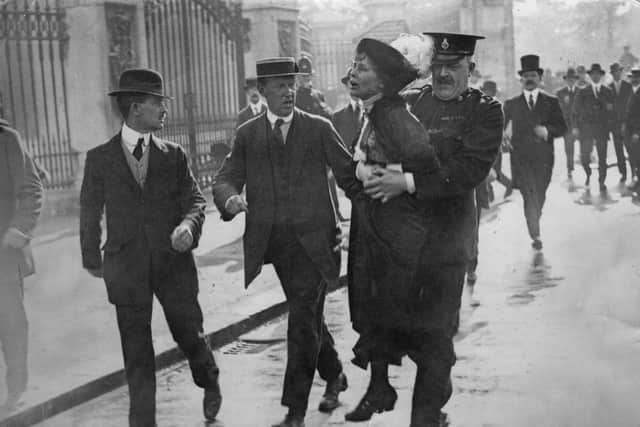

“It was a chaotic scene but the sheer drama of this extraordinary, spectacular, violent event happening in such a public event generated a tremendous controversy," says author Tony Wolf.
The 54-year-old expert on suffragette history based in Chicago wrote a graphic novel trilogy Suffrajitsu: Mrs Pankhurst’s Amazons in 2015 in which the Glasgow battle acts as an important climax.
However, worried about readers not realising his fiction focused on real life events, Wolf turned his attention to the plain - and often dramatic - truth of the history.
Co-producing and directing the 2018 documentary No Man Shall Protect Us: The Hidden History of the Suffragette Bodyguards, Wolf included a detailed, historical examination of the Battle of Glasgow.
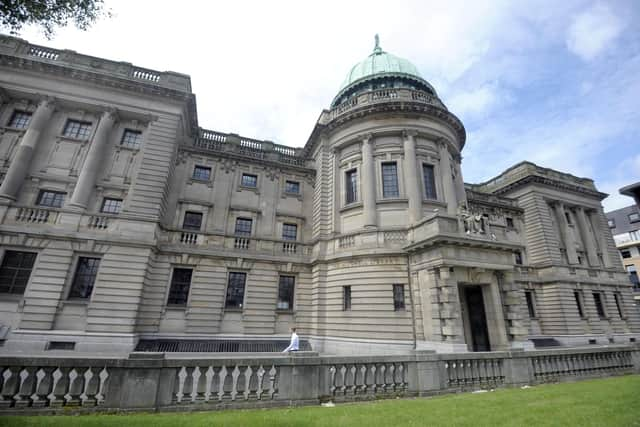

Now he guides us through the ‘battle’s’ rich history during which jujutsu and other self-defence tactics were on display.
The establishment of the Bodyguard
By 1913, Wolf says, there was a “revolving door of radical suffragettes” in and out of prison for crimes under the Cat and Mouse act.
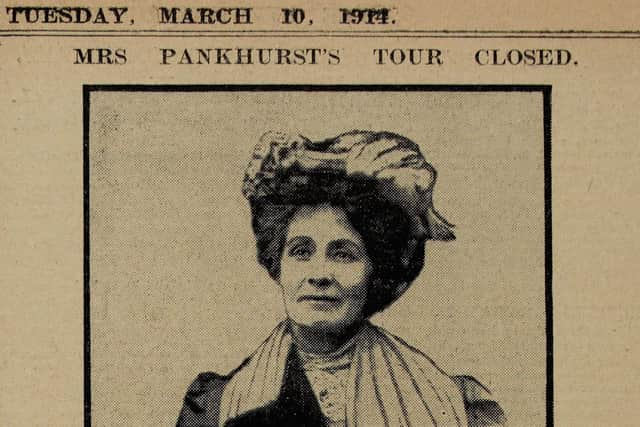

To keep their leaders free for as long as possible, the WSPU instituted the Bodyguard– a secret society of 30 or so women responsible for protecting suffragettes from arrest.
Advertisement
Hide AdAdvertisement
Hide AdBefore the Glasgow battle, this group of trained female tacticians - armed and ready to fight - organised to protect themselves and their leaders if the police struck.
The Bodyguard were trained in jujutsu which allowed them to use their attacker's force against them and carried concealed Indian clubs, the size of bowling pins and made of hardwood.
An anonymous article published at the time coined the term ‘suffrajitsu’ as a portmanteau of suffragette and jujutsu to describe them.
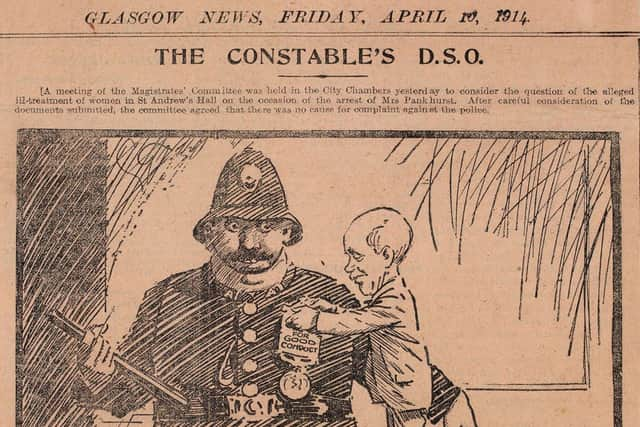

“At that time, it was extraordinary for these women of the middle-class to be seen street fighting with police constables and refusing to leave meekly and politely from political meetings,” says Wolf.
The trip to Glasgow
The Bodyguard travelled overnight by train in a third class carriage from London to Glasgow on March 8, 1914.
“They were very uncomfortable during this journey as they were carrying their concealed Indian clubs and the only place they could conceal them was in their dresses,” Wolf continues.
At the venue, WSPU London member Olive Bartels rigged the hall with defence mechanisms.
She arranged bouquets and garlands of flowers along the front of the stage, to conceal a screen of barbed wires to hinder police and hid buckets of water and ‘conspicuously sturdy’ flagpoles nearby.
Advertisement
Hide AdAdvertisement
Hide AdOn March 9, with Mrs Pankhurst scheduled to speak around 8pm, the Bodyguard arrived two hours early.
As many as 50 police constables marched into the premises and took up position in the hall basement. Meanwhile, the hall was surrounded by a cordon of police who checked audience members’ IDs as they arrived.
In all, a crowd of around 4,000 people gathered., close to the venue’s 4,500 capacity.
Officers hoped to arrest Mrs Pankhurst before she got into the hall.
She had, in fact, arrived in disguise earlier that evening and sat down at the front of the stage.
"At eight o’clock, the effect was like a magic trick,” says Wolf. “All of a sudden there’s Emmeline Pankhurst on stage and she began her speech.”
Action unfolds
After just a minute and a half of her speech, dozens of officers stormed in to arrest Pankhurst.
"The Bodyguard took up a defensive position in front of Emmeline Pankhurst who continued to speak for as long as she could.”
Advertisement
Hide AdAdvertisement
Hide AdPolice tried to clamber onto the stage but their uniforms became tangled in barbed wire.
Suffragettes threw their buckets of water and used the flagpoles as battering rams.
The skirmish escalated when leading Scottish suffragette Janie Allan drew a pistol from her skirt and fired at officers.
"The pistol was loaded with blanks because she wasn’t crazy but no one else in the hall knew that including other members of the bodyguard."
Allan was charged by one of the officers who was then struck on the back of his head with an Indian club.
"At this point, things started to get hairy. It became an all-out brawl that raged across the stage.
"The bodyguards were doing all they could to defend Emmeline Pankhurst with police constables drawing their truncheons.”
Pankhurst attempted to escape with a group of bodyguards but - frail and aged 54 - the guards released Pankhurst to police custody and she was jailed at the Central Police Station.
Advertisement
Hide AdAdvertisement
Hide Ad"Pandemonium was beginning to die down in the hall at this point.
"The police announced to the public that the meeting was over and they should go home, however, the meeting carried on with Flora Drummond giving a speech in Pankhurst’s stead.”
The suffragettes led a march through the streets of Glasgow with several thousand members of the audience before the crowds were eventually dispersed by officers on horseback.
Aftermath of the Battle of Glasgow
In the wake of the battle, pistol-drawing suffragette Allen campaigned for an enquiry into police brutality.
She wrote to attendees urging them to complete a written questionnaire about the event.
Women who attended complained of “unnecessary force” used to control the crowd, according to accounts in the National Library of Scotland.
"There was a great debate over whether the suffragettes had drawn their clubs first or the police had drawn their truncheons but I don’t think anyone knows that for sure,” says Wolf.
Despite the efforts of Janie Allen, the authorities dismissed the demands for an official enquiry saying that there was ‘no cause of complaint against the police.’
A hidden history?
Advertisement
Hide AdAdvertisement
Hide Ad“It’s not exactly a secret history but it’s a hidden history,” says Wolf.
Wolf suggests one of reasons few know of the Battle of Glasgow was due to the Suffragette Fellowship archive at the time ‘leaving out’ the brawl.
“Coming on the heels of the First World War, they deliberately left out a good deal of more violent, assertive and aggressive aspects.
"They decided that, in the wake of the war, everyone was sick of violence.
"It wasn’t really till the 1970s when feminist scholars began to take a much closer look at the stories but, even then, the popular image is the passive suffering martyr.
"But, in fact, they were much more active than that and far more dangerous.”
The Battle of Glasgow unleashed a fierce and defiant group of suffrage campaigners who divided contemporary public opinion.
These women were fed up being beaten down and quashed by sexist laws and a male ideal of womanhood. Instead, they picked up their Indian clubs and learnt jujutsu.
A message from the Editor:
Thank you for reading this article. We're more reliant on your support than ever as the shift in consumer habits brought about by Coronavirus impacts our advertisers.
If you haven't already, please consider supporting our trusted, fact-checked journalism by taking out a digital subscription.
Comments
Want to join the conversation? Please or to comment on this article.
